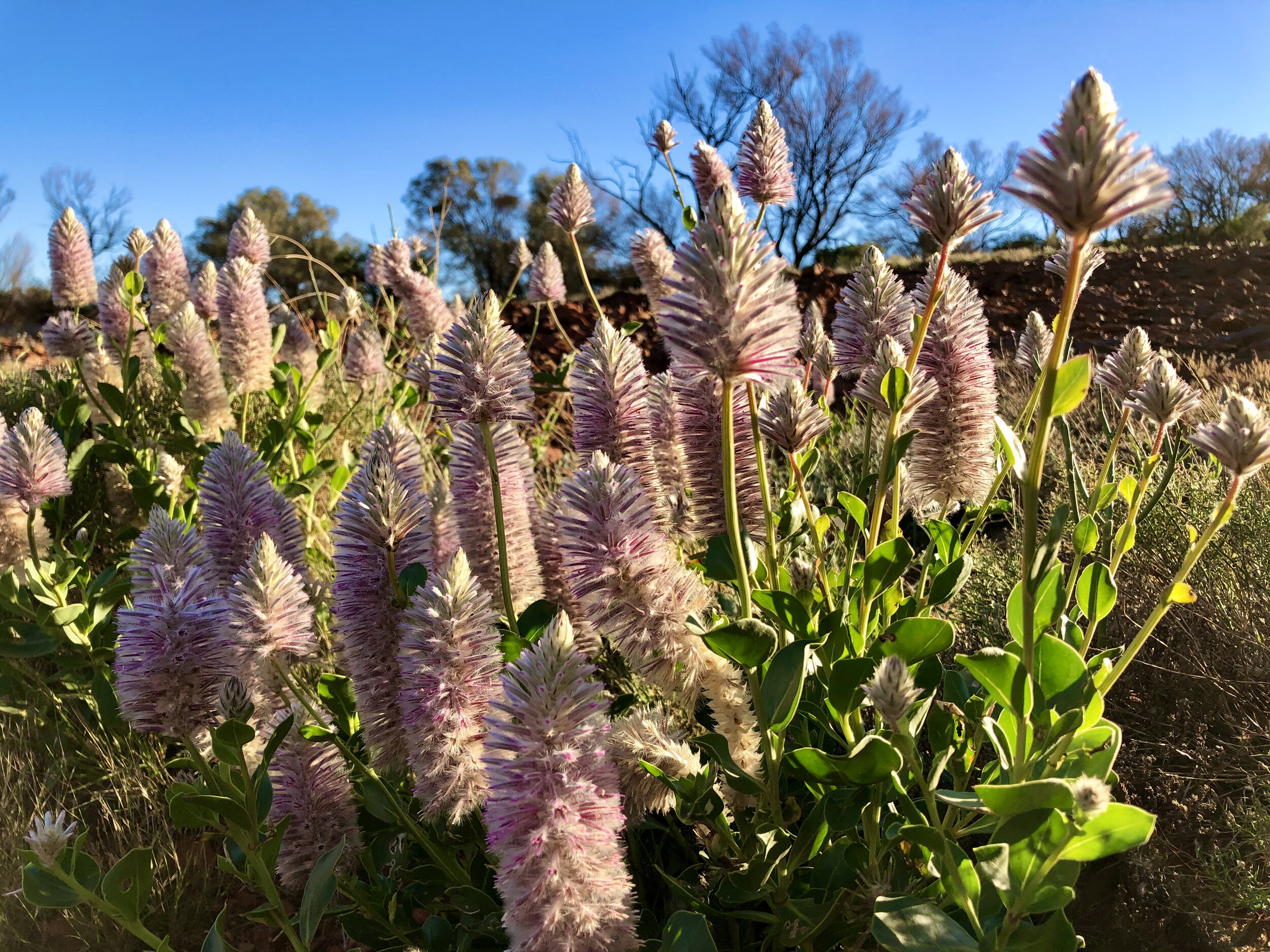Next stop, Uluru!
I don’t know many non-Australians who have heard of Uluru.
At least, it’s not a place people suggested I visit until recently. If you’re in the dark like I was, you might know the sandstone structure by its post-colonial name, Ayers Rock. And if that doesn’t ring a bell either, perhaps you'll remember the famous line, 'a dingo ate my baby!' and the terrifying true story that inspired it (don't worry, I won't tell anyone how old you are if you do).
Let’s pause for some geography…
Uluru is an oval monolith standing over 1,100 feet tall and nearly 6 miles around. That's about the same height as the John Hancock tower in Chicago and nearly eighty feet taller than the Eiffel Tower. Not so tall as mountains go, but when you add the fact that it’s sitting in the middle of the otherwise flat central Australian desert, then you’ve got quite a marvel. Oh, and did I mention that 1.5 miles of the UNESCO World Heritage site are buried underground?
Mala base walk
It took about three hours for us to walk most of Uluru’s perimeter. Picture it: sun shining; backpacks filled with bottled water; cameras; sunscreen and snacks. And more flies licking my facial salts than any human being should have to endure in a lifetime. I'm told flies aren't selective when it comes to free meals but, personally, I'd like to think it was my moisturizer they were after. Unfortunately, we didn't have a chance to purchase fly nets in advance to protect our faces, so I made due with my scarf.
My makeshift fly gear
Fortunately, the pesky flies didn’t stop us from enjoying the surroundings. And our autumn visit made the mid-afternoon heat far more tolerable than it would have been had we gone in summer (which, from what I understand, the heat then would have melted us faster than snow cones at a kids party in Florida).
The Mala walk offered an immersive landscape with some great side quests that reminded us that Uluru is so much more than just an inselberg. It’s a sacred place for our world's oldest living culture, the Aboriginal people, and the area’s traditional land owners, the Anangu.
Aborigines have travelled the Songlines from all over Australia for thousands of years to visit Uluru. And the power of this special place wasn’t lost on us non-indigenous tourists. Generous signage highlighting some culturally significant areas, helped us learn about the teaching cave, Kulpi Nyiinkaku, the Mutitjulu Waterhole where bush tucker (bush food) is foraged, and more.
Uluru sunrise
taken from Kata Tjuta
I recently learned that storytelling is an important part of Aboriginal culture. It's how life lessons are shared, values are imparted, historical learnings are taught, and so much more. I can't help but imagine how much knowledge has been passed down in the tens-of-thousands-of-years the Uluru region has been inhabited. Take a moment to consider how long that is.
The Olgas (Kata Tjuta)
After taking in a few incredible sunsets at Uluru (and gratuitously for us, the rising pink moon), we drove 45-minutes to spend half a day at Kata Tjuta to hike some more. The day began with us watching the sun rise over Uluru (photo above), and was followed by a three-hour hike through the Valley of the Winds. If that name doesn’t spark your interest like it did mine, then I promise the scenery there won’t disappoint. Changing landscapes, rocky crevices, spinifex, and other desert plants make this a not-to-be-missed experience that I hope you will one day get to see if you haven't already.
Here in Australia, the pandemic is still effecting our ability to travel internationally. So getting away means experiencing what’s available nearby. I couldn’t be more grateful that Uluru became a part of my journey. Not only has our visit there been a welcome reminder that I don't always need to travel far for an immersive experience, but it’s reinforced my desire to tell my own stories and, to one day soon, share my very first novel with you.














